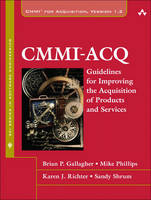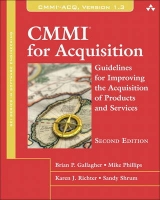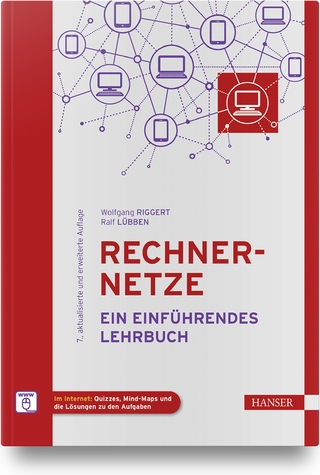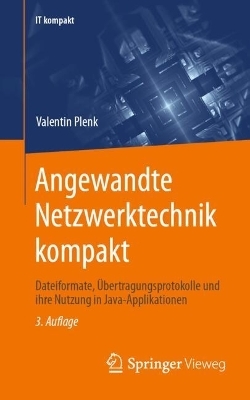
CMMI-ACQ
Addison-Wesley Educational Publishers Inc (Verlag)
978-0-321-58035-1 (ISBN)
- Titel erscheint in neuer Auflage
- Artikel merken
Modeled after CMMI®, Second Edition, which documented CMMI for Development, this book is the definitive reference for the current release of CMMI for Acquisition (version 1.2). In addition to the entire CMMI-ACQ model, the book includes tips, hints, cross-references, and other author notes to help you understand, apply, and find more information about the content of the acquisition process areas. The authors also have added two chapters to illustrate the application of CMMI-ACQ in industry (a case study from General Motors) and government. Whether you are new to CMMI models or are already familiar with one or more of them, you will find this book an essential resource for managing your acquisition processes and improving your overall performance.
The book is divided into three parts.
Part One introduces CMMI-ACQ in the broad context of CMMI models, including essential concepts and useful background. It then describes and shows the relationships among all the components of the CMMI-ACQ process areas, and explains paths to the adoption and use of the model for process improvement and benchmarking. Finally, two separate chapters describe special acquisition needs in a government environment and real experiences with CMMI-ACQ from industry.
Part Two first describes generic goals and generic practices, and then, in twenty-two sections, details each of the CMMI-ACQ process areas, including specific goals, specific practices, and examples. These process areas are organized alphabetically by process area acronym to facilitate quick reference.
Part Three provides several useful references, including sources for further information about CMMI and CMMI-ACQ, acronym definitions, a glossary of terms, and an index.
Brian P. Gallagher is director of ISR Mission Systems Engineering within the ISR Systems Division, Mission Systems Sector, Northrop Grumman. He was previously director of the Software Engineering Institute (SEI) Acquisition Program. Mike Phillips is program manager for CMMI at the SEI. In that position he leads the CMMI Product Suite evolution for the SEI. He was a senior acquisition professional in the military before joining the SEI. Dr. Karen J. Richter is a research analyst and senior project leader at the Institute for Defense Analyses (IDA), a research and development “think tank” for the Department of Defense. She has served on the CMMI Configuration Control Board and the CMMI Steering Group. Sandy Shrum is a senior writer/editor at the SEI. She has been with the SEI since 1995 and has been a member of the CMMI Development Team since the CMMI project’s inception in 1998.
Foreword: A Commercial Perspective xi
Foreword: A Government Perspective xv
Preface xvii
Acknowledgments xxv
Part One: About CMMI for Acquisition 1
Chapter 1: Introduction 3
About Capability Maturity Models 5
Evolution of CMMI 7
CMMI Framework Architecture 8
CMMI for Acquisition 9
Chapter 2: Process Area Components 11
Required, Expected, and Informative Components 11
Components Associated with Part Two 13
Supporting Informative Components 17
Numbering Scheme 19
Typographical Conventions 19
Chapter 3: Tying It All Together 23
Understanding Levels 23
Structures of the Continuous and Staged Representations 25
Understanding Capability Levels 27
Understanding Maturity Levels 30
Process Areas 35
Equivalent Staging 38
Chapter 4: Relationships among Process Areas 43
Project Processes 44
Organizational Processes 49
Support Processes 50
High Maturity Processes 52
Chapter 5: Using CMMI Models 55
Adopting CMMI 55
Your Process Improvement Program 56
Selections That Influence Your Program 56
CMMI Models 57
Using CMMI Appraisals 58
Appraisal Requirements for CMMI 58
SCAMPI Appraisal Methods 59
Appraisal Considerations 59
CMMI-Related Training 61
Chapter 6: Using CMMI-ACQ in Government 63
Critical Issues in Government Acquisition 63
Acquisition Strategy: Planning for Success 70
Agreements: They Are Not Just with Suppliers 75
Acquisition Verification: The Challenges 77
Interoperable Acquisition 81
Transition to Operations: Delivering Value 84
CMMI: The Heart of the U.S. Air Force’s Systems Engineering Assessment Model 86
Acquisition Improvement: Identifying and Removing Process Constraints 90
Chapter 7: Using CMMI-ACQ in Industry: General Motors Case Study 97
Executive Summary 97
Overview of General Motors 100
Overview of GM Information Systems & Services (IS&S) 101
IS&S Factory Structure 104
System Delivery Factory: An Acquisition Organization 105
Governance of the System Development Factory 107
Aligning the GM System Delivery Process to CMMI-ACQ 108
Realizing Value from the CMMI-ACQ at GM 113
GM to CMMI-ACQ Practice Mapping 129
Managing Process Deployment and Change 129
Integrated Tools Enable High-Performance Acquisition 132
Conducting Appraisals to Drive Change 133
Aligning Supplier Relationships 134
Future Actions 135
Summary 136
Part Two: Generic Goals and Generic Practices, and the Process Areas 137
Generic Goals and Generic Practices 139
Agreement Management 165
Acquisition Requirements Development 173
Acquisition Technical Management 187
Acquisition Validation 199
Acquisition Verification 207
Causal Analysis and Resolution 217
Configuration Management 227
Decision Analysis and Resolution 239
Integrated Project Management 249
Measurement and Analysis 267
Organizational Innovation and Deployment 285
Organizational Process Definition 301
Organizational Process Focus 315
Organizational Process Performance 329
Organizational Training 341
Project Monitoring and Control 353
Project Planning 367
Process and Product Quality Assurance 397
Quantitative Project Management 405
Requirements Management 425
Risk Management 433
Solicitation and Supplier Agreement Development 451
Part Three: The Appendices and Glossary 469
Appendix A: References 471
Appendix B: Acronyms 475
Appendix C: Project Participants 479
Appendix D: Glossary 485
Book Contributors 511
Index 519
| Erscheint lt. Verlag | 5.1.2009 |
|---|---|
| Reihe/Serie | SEI Series in Software Engineering |
| Verlagsort | New Jersey |
| Sprache | englisch |
| Maße | 244 x 190 mm |
| Gewicht | 988 g |
| Themenwelt | Mathematik / Informatik ► Informatik ► Netzwerke |
| Mathematik / Informatik ► Informatik ► Software Entwicklung | |
| Wirtschaft ► Betriebswirtschaft / Management ► Logistik / Produktion | |
| ISBN-10 | 0-321-58035-4 / 0321580354 |
| ISBN-13 | 978-0-321-58035-1 / 9780321580351 |
| Zustand | Neuware |
| Haben Sie eine Frage zum Produkt? |
aus dem Bereich



